 |
|
HOME
|
US Navy -
ships
|
US Navy - air
units
|
USMC - air
units
|
International
Navies
|
Weapon Systems
|
Special Reports |
|
Japan Maritime Self Defense Force / JMSDF Izumo class Helicopter Destroyer - DDH |
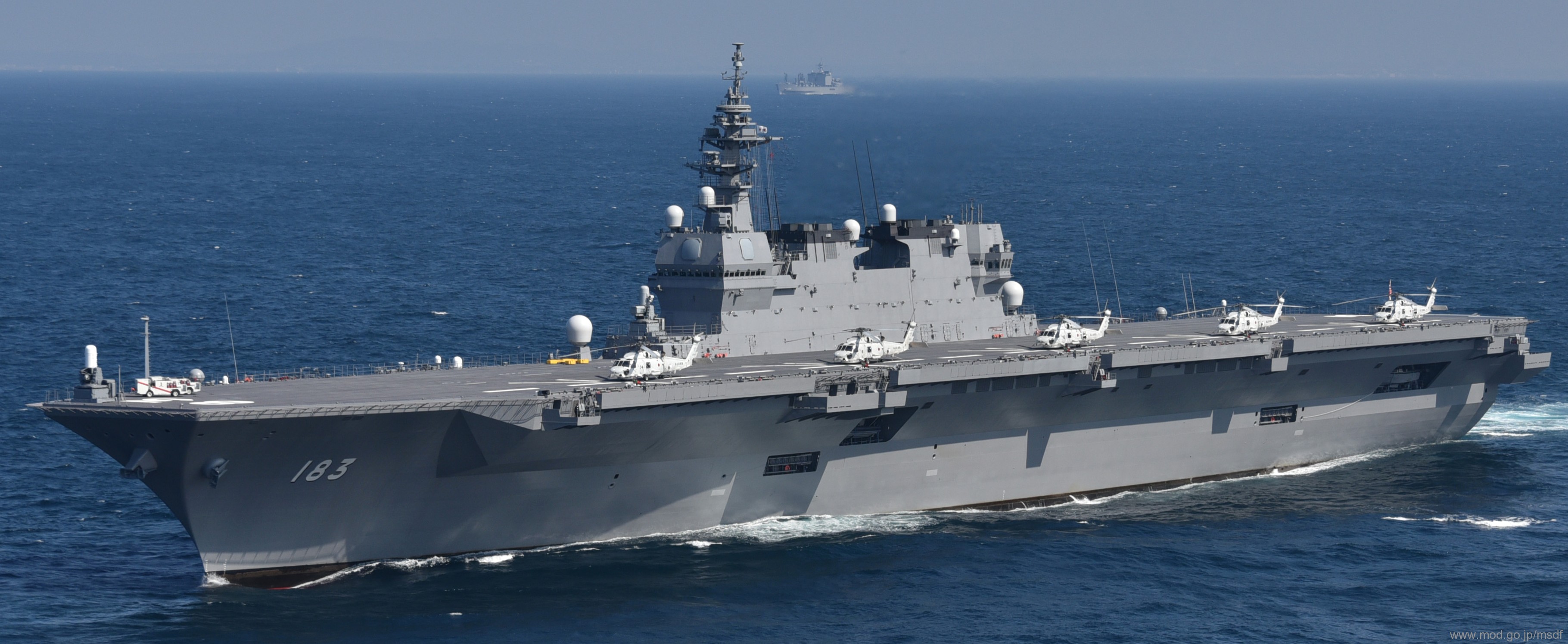 |
| 07/22 |
| Ships: |
|
DDH-183 JS Izumo (2015) DDH-184 JS Kaga (2017) |
| Specifications: |
|
Length: 248 meters (813 feet 8 inches) Beam: 38 meters (124 ft 8 in) Draft: 7.5 meters (24 ft 7 in) Displacement: 19500 tons (empty) / 27000 tons (full load) Speed: 30 knots (56 km/h) Range: - Complement: 970 (incl. air wing) Propulsion: Combined Gas and Gas (COGAG) 4 x Ishikawajima Harima Industries - IHI/General Electric LM2500 IEC gas turbines (134000 shp / 100MW) 2 shafts / 2 controllable pitch propellers Aviation: full flight deck (5 landing spots) / hangar deck up to 28 aircraft, max. (SH-60K Seahawk / F-35B Lightning II) Armament: 2 x Mk.15 Mod.31 SeaRAM Close-In-Weapon-System (CIWS) 2 x Mk.15 Phalanx Close-In-Weapon-System (CIWS) Systems: ATECS (Advanced Technology Command System) OYQ-12 Combat Direction System FCS-3 Fire Control System OPS-50 AESA Radar (Active Electronically Scanned Array) OPS-28 Surface-search Radar OQQ-23 Bow Sonar NOLQ-3D-1 EW suite Mark 36 SRBOC Anti-torpedo Mobile Decoy (MOD) Floating Acoustic Jammer (FAJ) |
|
The Izumo-class multi-purpose destroyers or 22DDH are helicopter
carriers in service with the Japan Maritime Self-Defense Force
(JMSDF). In December 2018, the Japanese Cabinet gave approval to
convert both ships in the class into aircraft carriers capable of
operating the STOVL F-35B. The class is designated as a
multi-purpose operation destroyer by the Japanese government due to
limits on the Japanese Constitution prohibiting the acquisition of
offensive platforms. The ships of this class are currently the
largest surface combatants of the JMSDF, taking over the mantle
previously held by the Hyuga-class helicopter destroyers. The lead
ship was officially unveiled at Yokohama on 6 August 2013. The Japanese Ministry of Defense (MOD) first announced plans for the class on 23 November 2009. This ship's primary mission is anti-submarine warfare (ASW) but peacekeeping and disaster relief operations are also being considered. The ship carries up to 28 aircraft. However, only 7 ASW helicopters and 2 search and rescue (SAR) helicopters are planned for the initial aircraft complement. For other operations, 400 troops and 50 3.5 ton trucks (or equivalent equipment) can also be carried. The flight deck has 5 helicopter landing spots that allow simultaneous landings or take-offs. The ship is equipped with 2 Phalanx CIWS and 2 SeaRAM for its defense. The destroyers of this class were initially intended to replace the two ships of the Shirane class, which were originally scheduled to begin decommissioning in FY2014. In 2010, Forecast International reported that some design features were intended to support fixed wing aircraft such as the Bell Boeing V-22 Osprey and Lockheed Martin F-35 Lightning II, although neither the MOD nor the JMSDF have mentioned the possibility of introducing carrier-based fixed-wing aircraft. The ship has neither a "ski-jump" nor a catapult, typical features for launching fixed-wing aircraft. If the Izumo class were to operate fixed-wing aircraft, they would be limited to those capable of STOVL (short take-off, vertical landing) operations. The construction of the first ship of the class began in 2011 at an IHI Marine United shipyard in Yokohama, with funding totalling 113.9 billion yen ($1.5 billion) being set aside in the fiscal 2010 budget for this purpose. Conversion to an Aircraft Carrier: On 6 August 2013, JS Izumo was unveiled in Yokohama, south of Tokyo, Japan. Japanese officials claimed it would be used in national defense, specifically citing anti-submarine warfare and border-area surveillance missions. Additionally, it is also asserted to bolster Japan's ability to transport personnel and supplies in response to large-scale disasters. This unveiling occurred at a time of heightened tensions over the Senkaku Islands. The Washington Post noted that this ship - the biggest warship in Japan's fleet since World War II - "has raised eyebrows in China and elsewhere because it bears a strong resemblance to a conventional aircraft carrier" and has been described by the Chinese as an "aircraft-carrier in disguise." Though called a destroyer, some experts believe the new Japanese ship could potentially be used in the future to launch fighter jets (F-35B) or other fixed wing aircraft. Japanese military sources confirmed that the possibility of operating fixed wing aircraft was incorporated into the design of the ships from the earliest stages of the Izumo program, but this was not made public because Article 9 of the Japanese Constitution prohibits Japan from possessing offensive military weapons such as aircraft carriers. The aircraft elevators and the deck paint were designed to handle aircraft like the F-35B, and it would be possible to add a ski-jump to the flight deck for STOVL operations. In December 2017, several sources including Reuters and Yomiuri Shimbun reported that the Japanese government was contemplating modifying the Izumo class to operate F-35B STOVL aircraft. Multiple plans were reportedly under consideration, some of which call for US Marine Corps F-35s to use the vessels while others for Japan to procure its own aircraft. The plan quickly raised criticism from China, where government officials reacted negatively and urged Japan to "act cautiously". Later, in February 2018, the Yomiuri Shimbun reported that Japan was planning to acquire 40 F-35B, the Short Take-off and Vertical Landing (STOVL) variant of the Lockheed Martin Lightning II Joint Strike Fighter (JSF), which could be operated from Izumo class with some modifications to the ships. It was estimated that each Izumo-class carrier could operate 12 or more F-35B aircraft. In March that same year, the ruling Liberal Democratic Party called upon the Japanese government to develop its own aircraft carriers and operate F-35B aircraft, which has been thought to include refitting the Izumo class. Defence Minister Takeshi Iwaya announced on 27 November 2018 that Japan is considering buying F-35B within an order for an additional 100 F-35 aircraft, and as a consequence modifying both Izumo-class helicopter carriers to operate F-35B were also considered. Approval of conversion: On 18 December 2018, the Japanese Cabinet gave approval to modify the Izumo class into de facto aircraft carriers. The modifications will reinforce the decks of the Izumo-class ships to support the additional weight of F-35B, as well as the heat and forces from the jets during vertical landing. Each vessel will also have the bow section of its flight deck, which is currently trapezoidal, modified into a square shape. The ruling parties re-designated the Izumo-class ships to multi-purpose operation destroyers. On 30 December 2019, Japanese Ministry of Defense approved the FY2020 budget that would finance the refurbishment of the Izumo class for F-35B operation. The United States Marine Corps plans to operate their own STOVL F-35s from Izumo-class ships in cooperation with the ship's crew to build up a Japanese capability to operate this type of aircraft. The Japan Air Self-Defense Force has ordered 42 STOVL F-35Bs in 2019 and will operate them from land bases once delivered. In July 2021 it was indicated that of the 42 F-35B variants to be acquired, 18 will be introduced by FY2023, six in FY2024 and two in FY2025. These are to form a single squadron consisting of about 20 aircraft operating from the Nyutabaru Air Base in Miyazaki Prefecture in southwestern Japan. The base is located in close proximity to the JMSDF's Kure Base in Hiroshima Prefecture, which is the home port of JS Kaga. The Asahi Shimbun quotes Japan's Defense Minister Takeshi Iwaya "The Izumo-class aircraft carrier role is to strengthen the air defense in the Pacific Ocean and to ensure the safety of the Self-Defense Force pilots." He also states, "there may be no runway available for the US aircraft in an emergency. I cannot say that the US F-35B should never be placed on an [JMSDF] escort vessel." In 2020, Izumo began the conversion process. Initial modifications include strengthening the heat resistance of the deck and installing power supply equipment to enable the departure and arrival of the F-35B. A second renovation, to change the bow shape to a quadrangle for the safe operation of the F-35B and the maintenance of the interior compartments, is scheduled to be carried out starting from the end of 2024. On 3 October 2021, two USMC F-35Bs performed the first vertical landings and horizontal take-offs from JS Izumo, marking 75 years since fixed-wing aircraft operated from a Japanese carrier. source: wikipedia |
|
class + detail images for more images go to the individual ship-site |
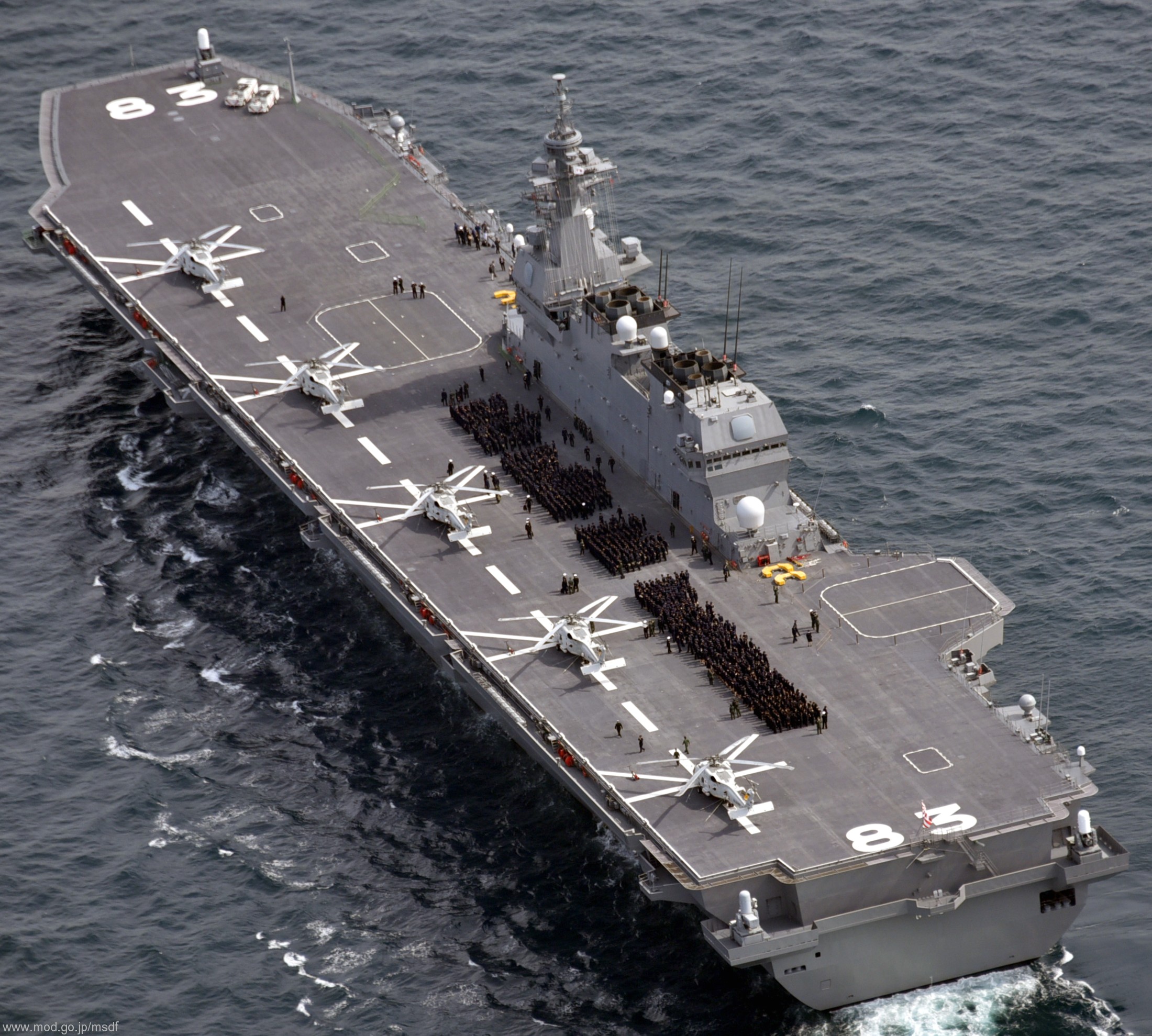 DDH 183 JS Izumo 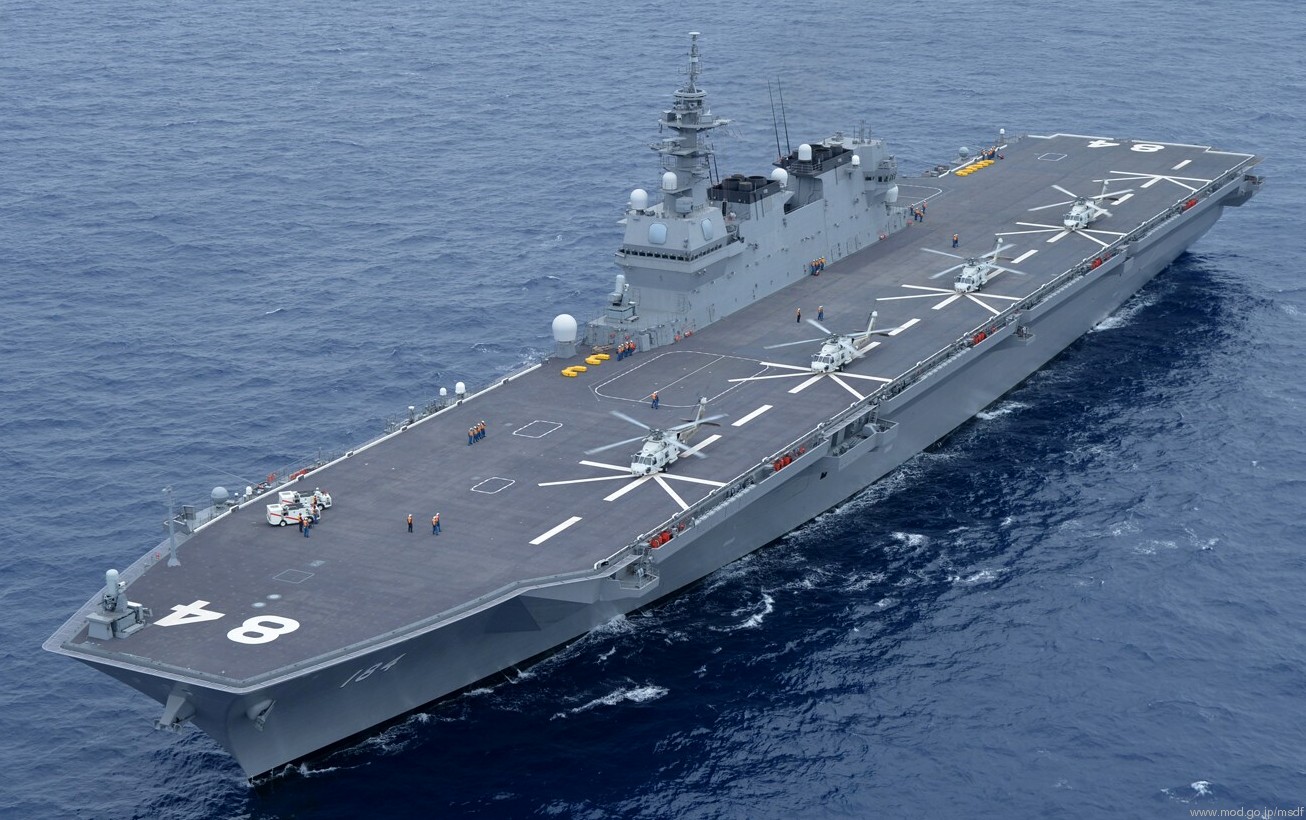 DDH 184 JS Kaga 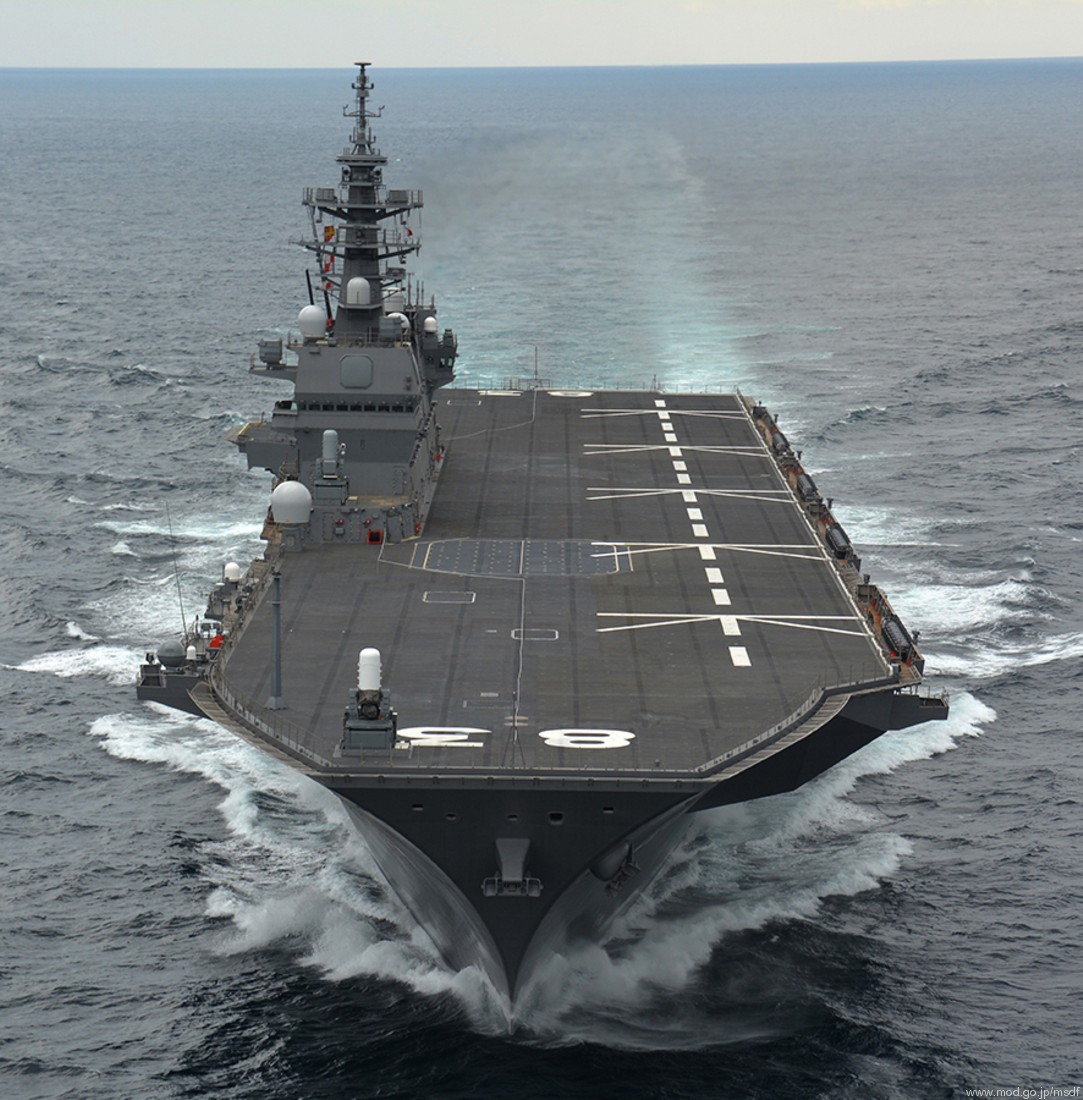 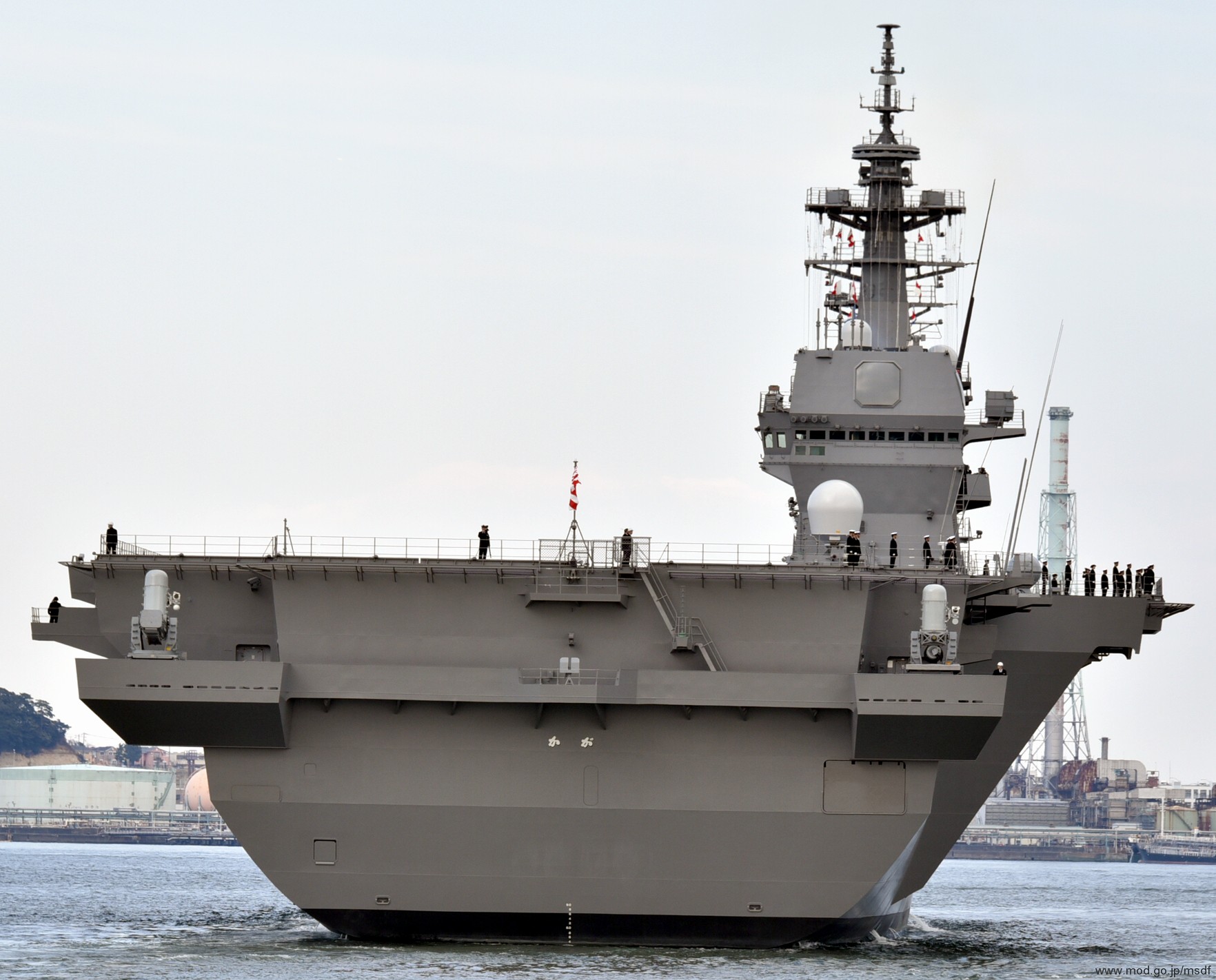 SeaRAM CIWS and Mk-15 Phalanx CIWS on the stern 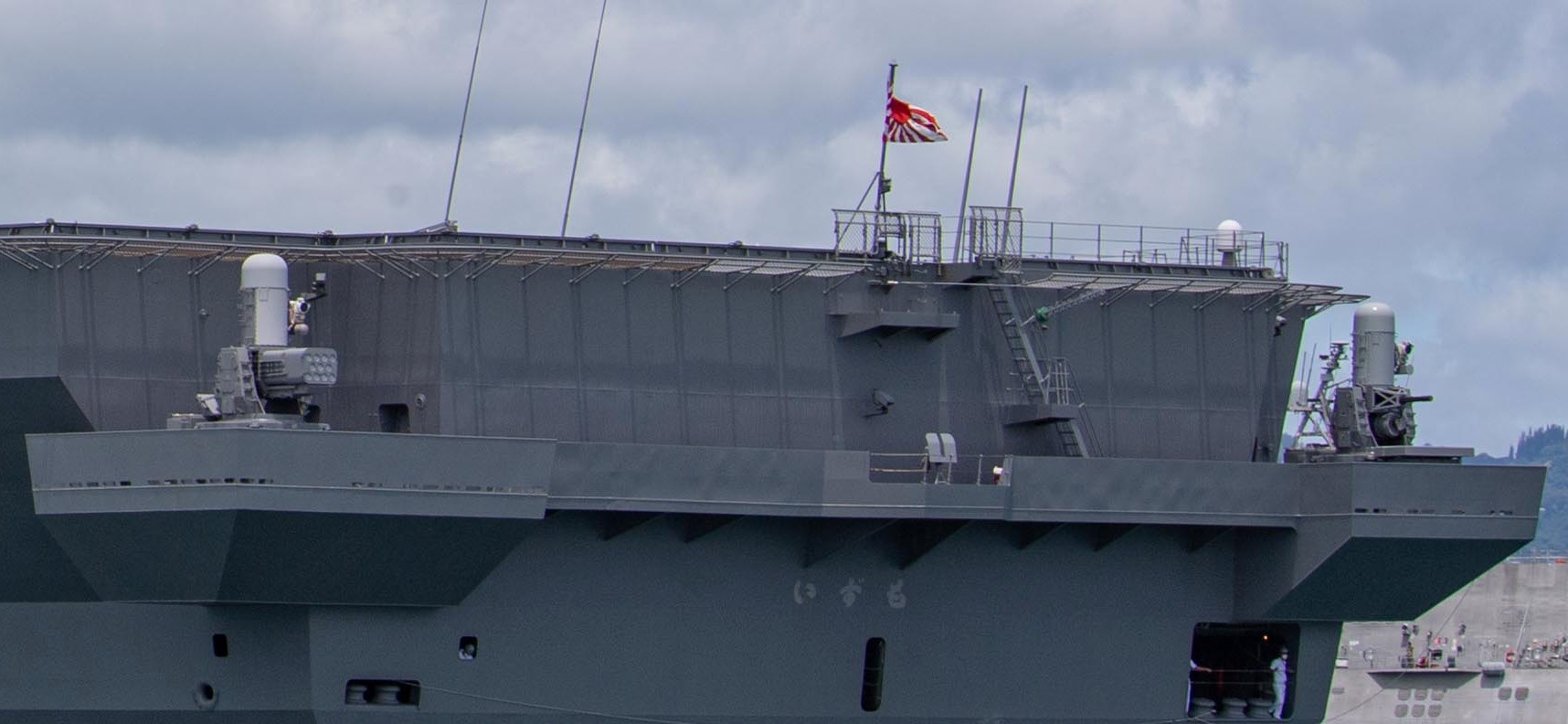 SeaRAM CIWS and Mk-15 Phalanx CIWS on the stern 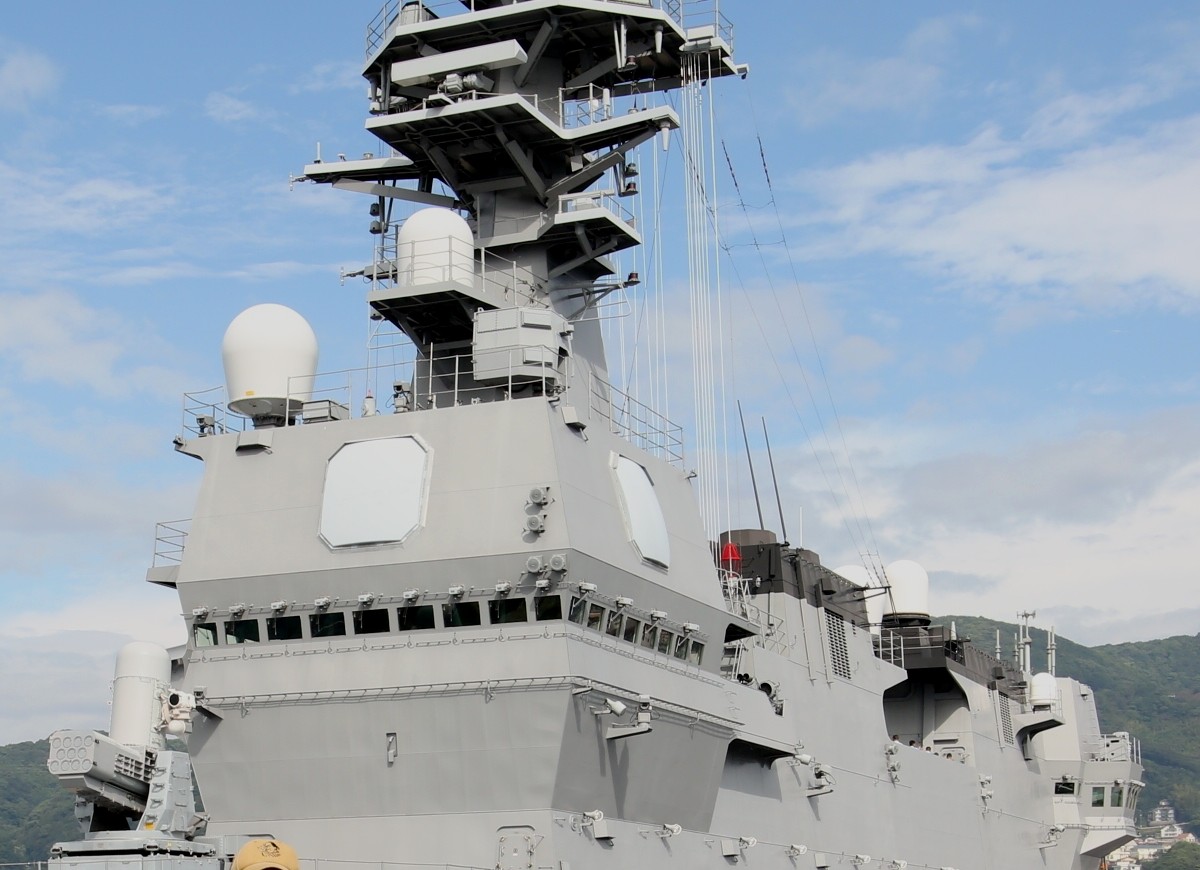 superstructure details - OPS-50 AESA radar and forward SeaRAM CIWS |
|
|
|
|
seaforces.org
|
Japan Maritime Self Defense Force start page
| |